A Short Train Journey from Kyoto JR Station
On a recent visit to Japan, my wife suggested that we visit Uji, near Kyoto. Although I’ve been to Kyoto a few times before, Uji was not a place that rang any bells. A quick Google search revealed that it is renowned throughout Japan for the very high quality of its locally grown tea and it has two temple complexes which are UNESCO World Heritage sites.
We were staying in the port city of Kobe, so to get to Uji we took a JR “Rapid Express” train from Ashiya Station via Osaka to the main JR Station in Kyoto. We changed there to the JR Nara Line for the 30-minute local train journey to Uji. The local train was very crowded indeed, full of tourists, mainly from China. Fortunately, Japanese trains are well air-conditioned.
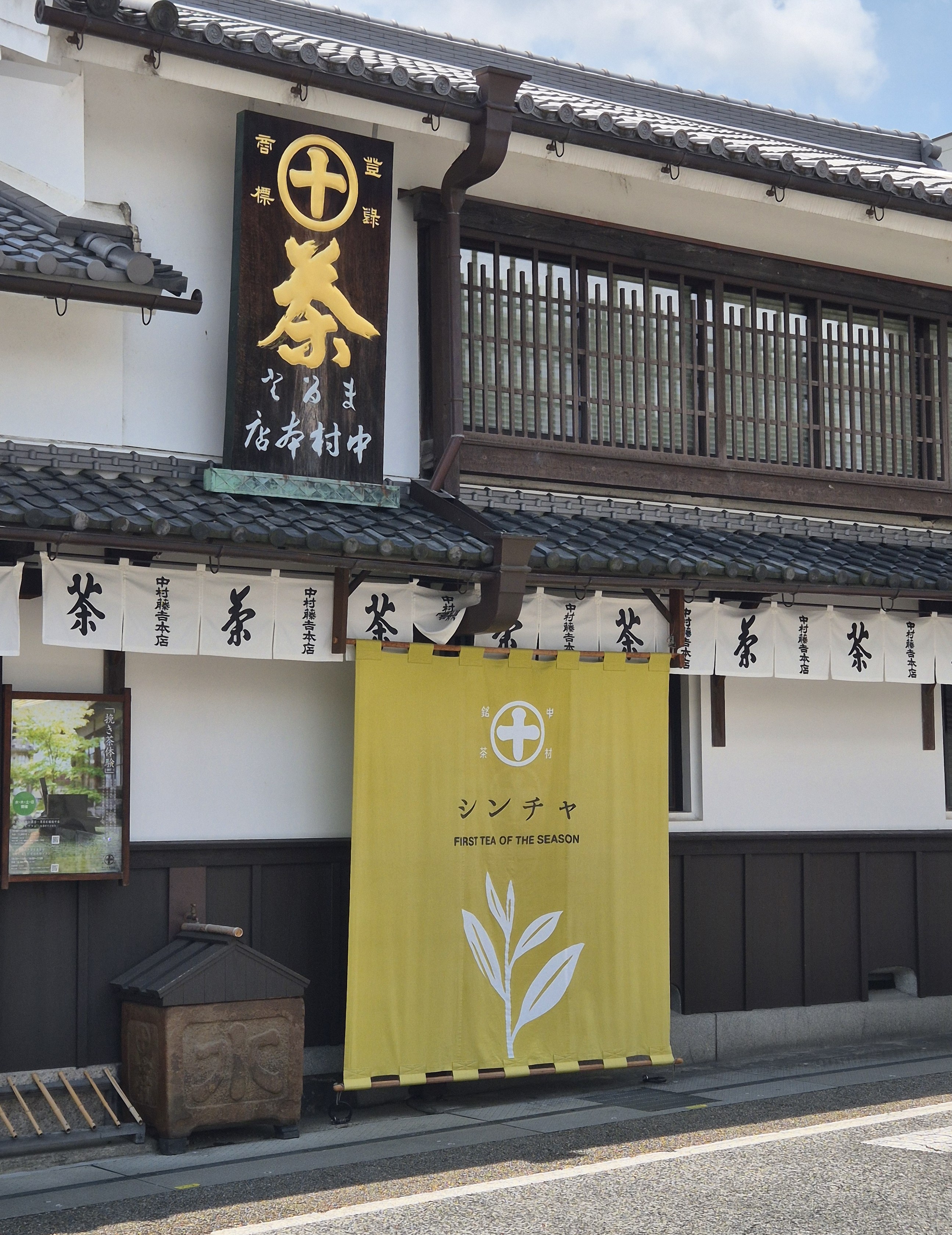
The main tourist sites are all within easy walking distance of Uji Station. As we emerged from the station we were greeted by a sign which read: “First Tea of the Season” – clearly we’d picked a good time to visit!
It soon became apparent that this is a small town devoted to tea and temples – tea shops and tea merchants abound (there are two Tea Museums) and there’s an abundance of smaller temples to visit if your interest in Japanese temples is still not satisfied after you’ve visited the two UNESCO sites.
Afuhi (@afuhi_uji on Instagram)
As we’d arrived at lunch time our priority was to find a restaurant. My wife has an amazing ability to find great places to eat, and in Uji she found “Afuhi”, a quirky and unpretentious little eatery that serves rather intriguing risotto-style dishes. Their Ojiyan Risotto is made from cooked rice, not raw rice and is a fusion of Japanese ojiya (rice soup) and Italian risotto, with seasonal vegetables from the Ohara region, plus Uji matcha (green tea powder) and chirimen sansho (pepper) – absolutely delicious, and probably explains why the restaurant has so many Instagram followers.
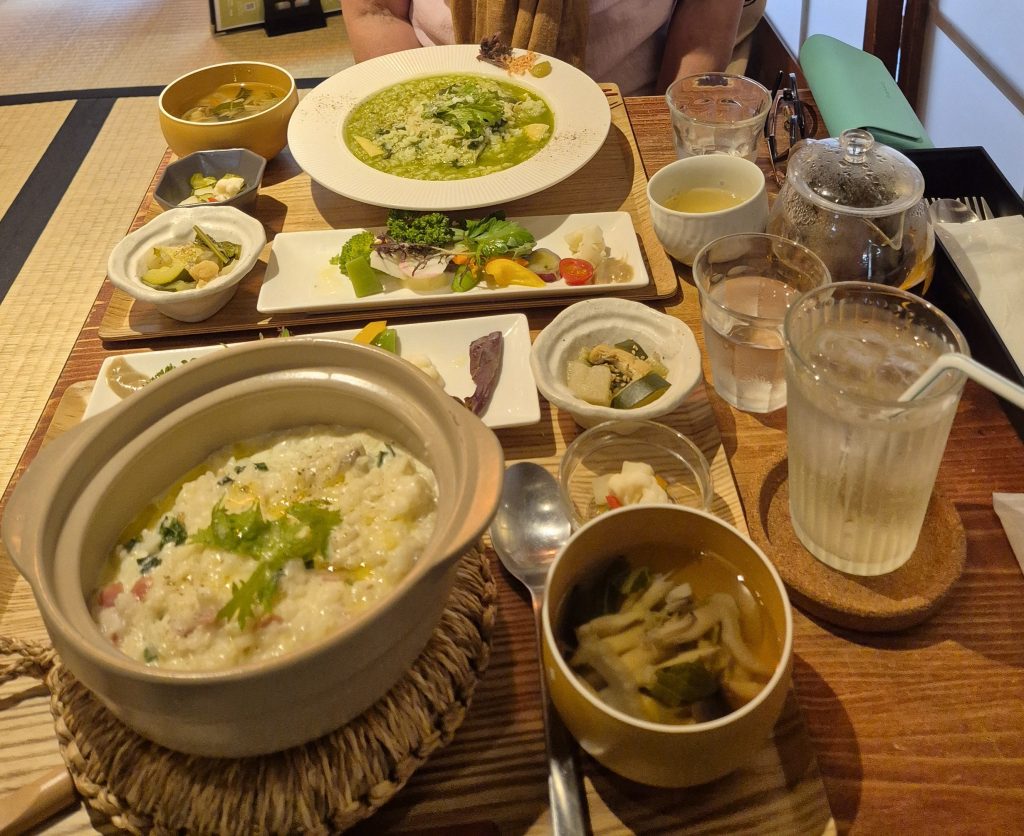
Byōdō-in Temple
After lunch we walked towards the river and turned into the busy street that leads to the Buddhist Byōdō-in Temple complex (Temple of Equality). This street is full of little shops selling a wide variety of Japanese tea and was heaving with tourists. Not being quite ready for a tea-tasting session we bought our tickets to the temple (700 yen) and entered the grounds.
The temple has a 1,000-year history and is truly spectacular. It was a pleasure just to stroll through the temple grounds taking in the beauty of the temple from different vantage points. The main building in the Byōdō-in complex is called the Phoenix Hall, the central hall of which houses an image of Amida Buddha. The Phoenix Hall features on the Japanese 10-yen coin.
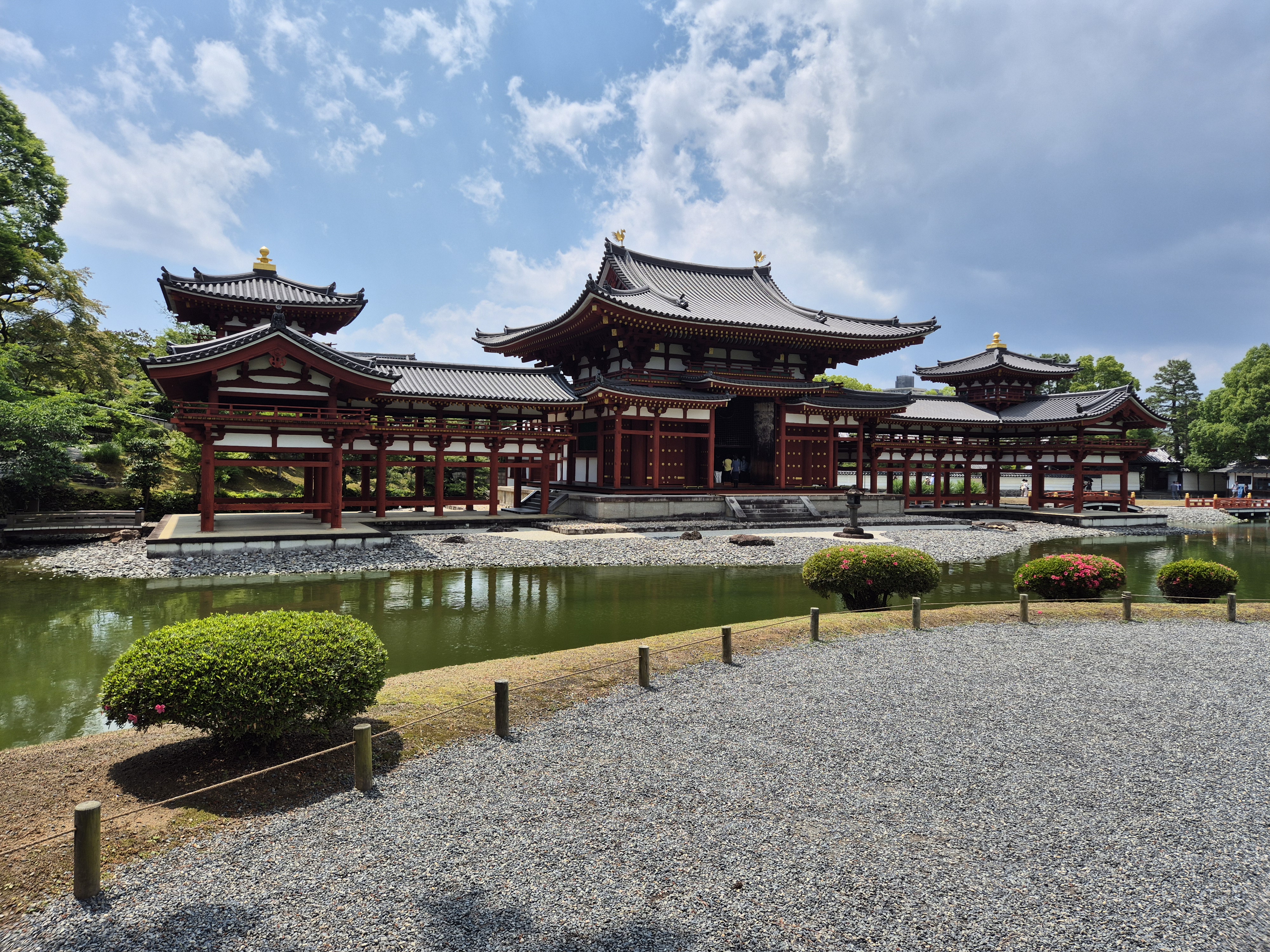
Our next stop was at Uji’s other UNESCO World Heritage site – the Ujigami Shrine, one of the oldest Shinto shrines in Japan. Getting there involved a pleasant walk along the banks of the fast-flowing Uji River and crossing the bridge to the other side. We were visiting Uji in June, but during the summer evenings between July and September you can see “Uji Gawa Ukai” (cormorant fishing) from viewing boats on the Uji River.
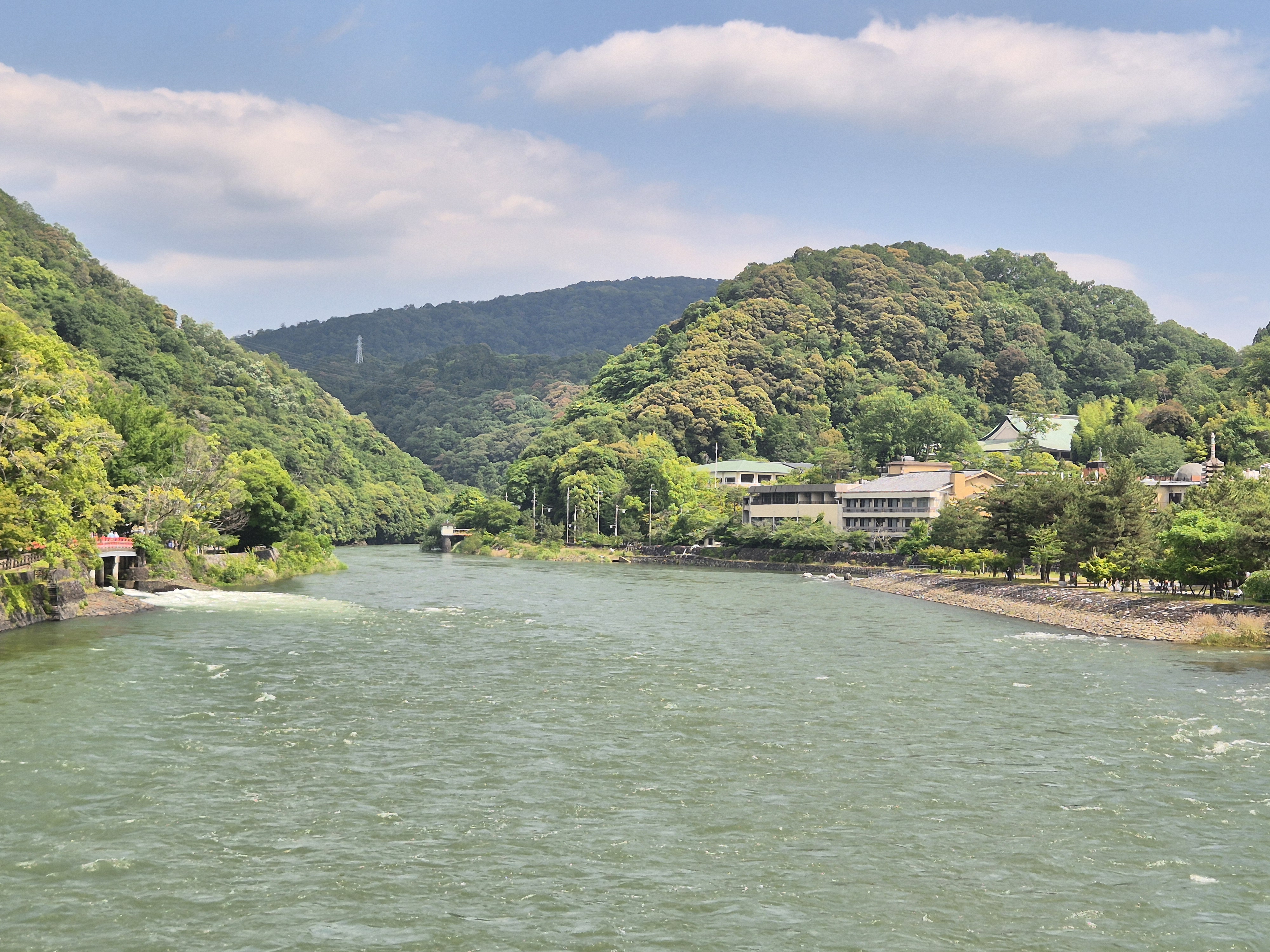
Ujigami Shrine
To reach the Ujigami Shrine you pass under an orange torii (gate), walk up a path lined with stone lanterns and climb up some steps. It seems to be far less visited than the Byōdō-in Temple, as it is less spectacular, but we found it a rather tranquil spot to sit and contemplate.

It’s All About the Tea!
Having “done the UNESCO temples” it was time to go in search of some Uji tea. My wife wanted to buy some packets of tea to take to friends and family, and perhaps do some tea-tasting, so we walked back over the bridge to the other side of the Uji River.
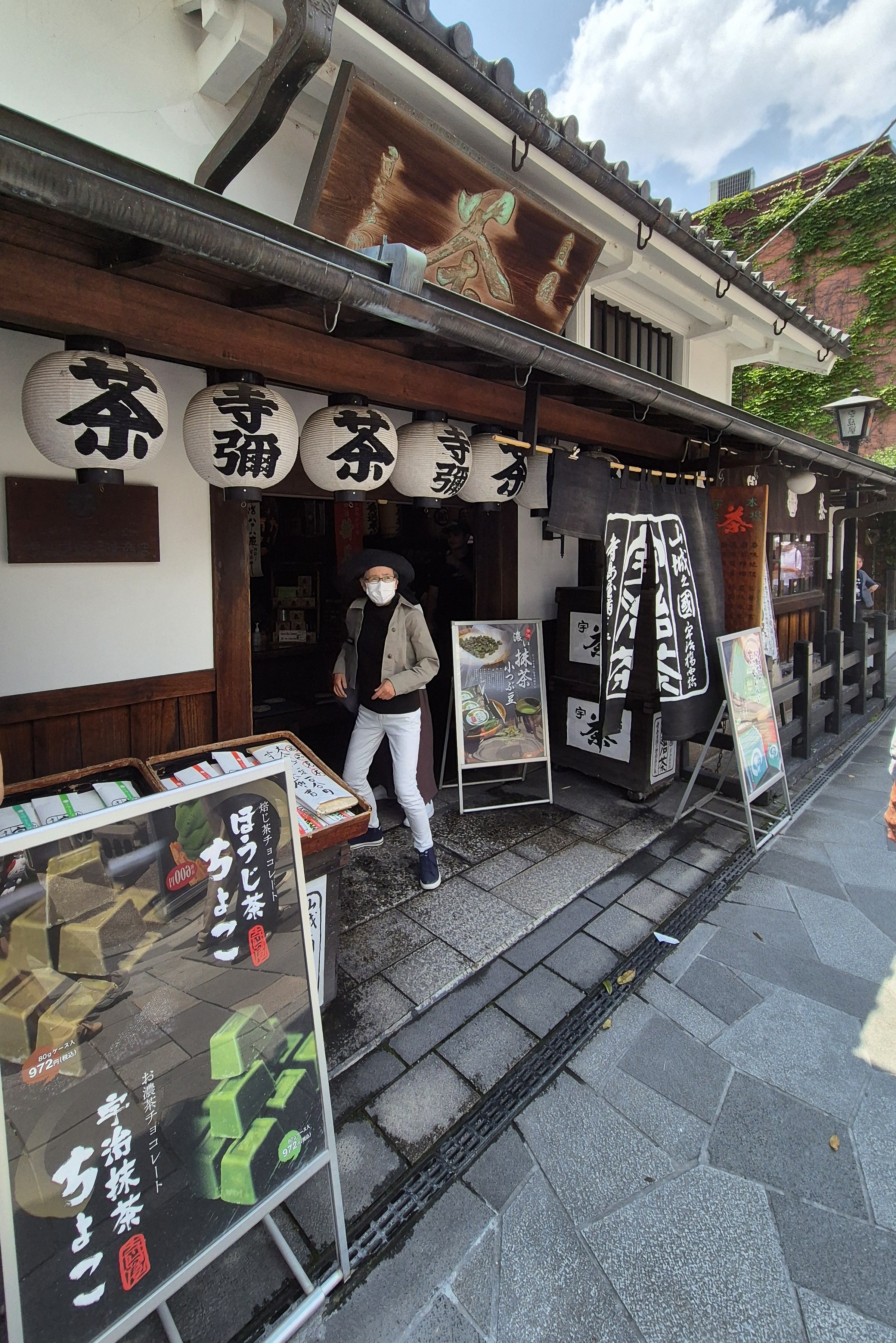
If you visit Uji you’re pretty much guaranteed to have an encounter with tea. Matcha is what you get when shade-grown green tea leaves are ground into a bright green, fine powder on a stone mortar. I found a helpful graphic (see pic below) in a tea shop which had actually sold out of matcha (!) that explains the different grades/levels of bitterness of Uji matcha.
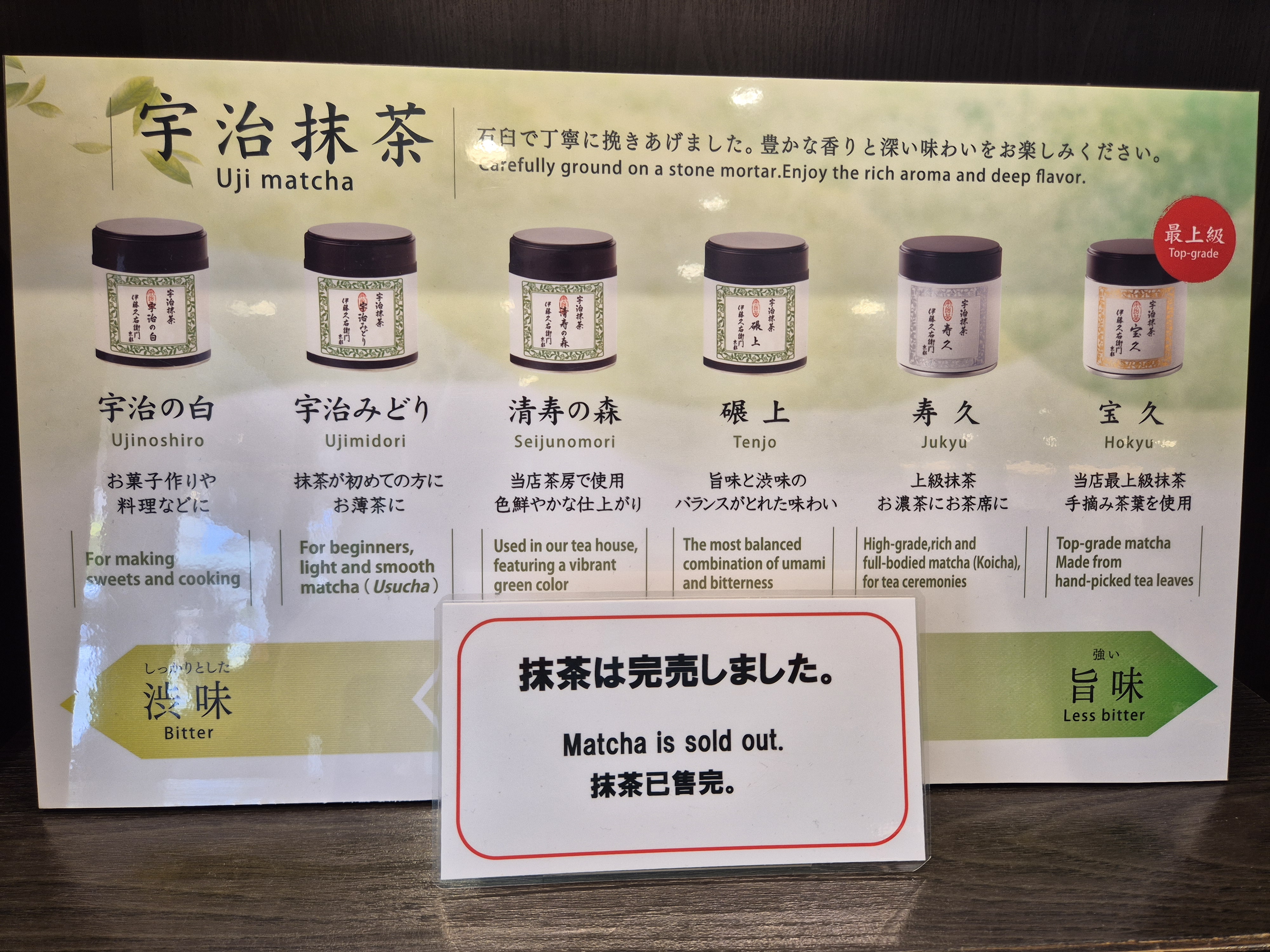
The arrival of the first tea of the season, plus the considerable interest that Chinese tourists clearly have in buying Japanese tea, meant that the tea shops and tea merchants of Uji were very busy. We eventually found a lovely old tea merchant premises and did a tea tasting there. The owners were happy for me to roam around taking pics of the interior of their beautiful shop.
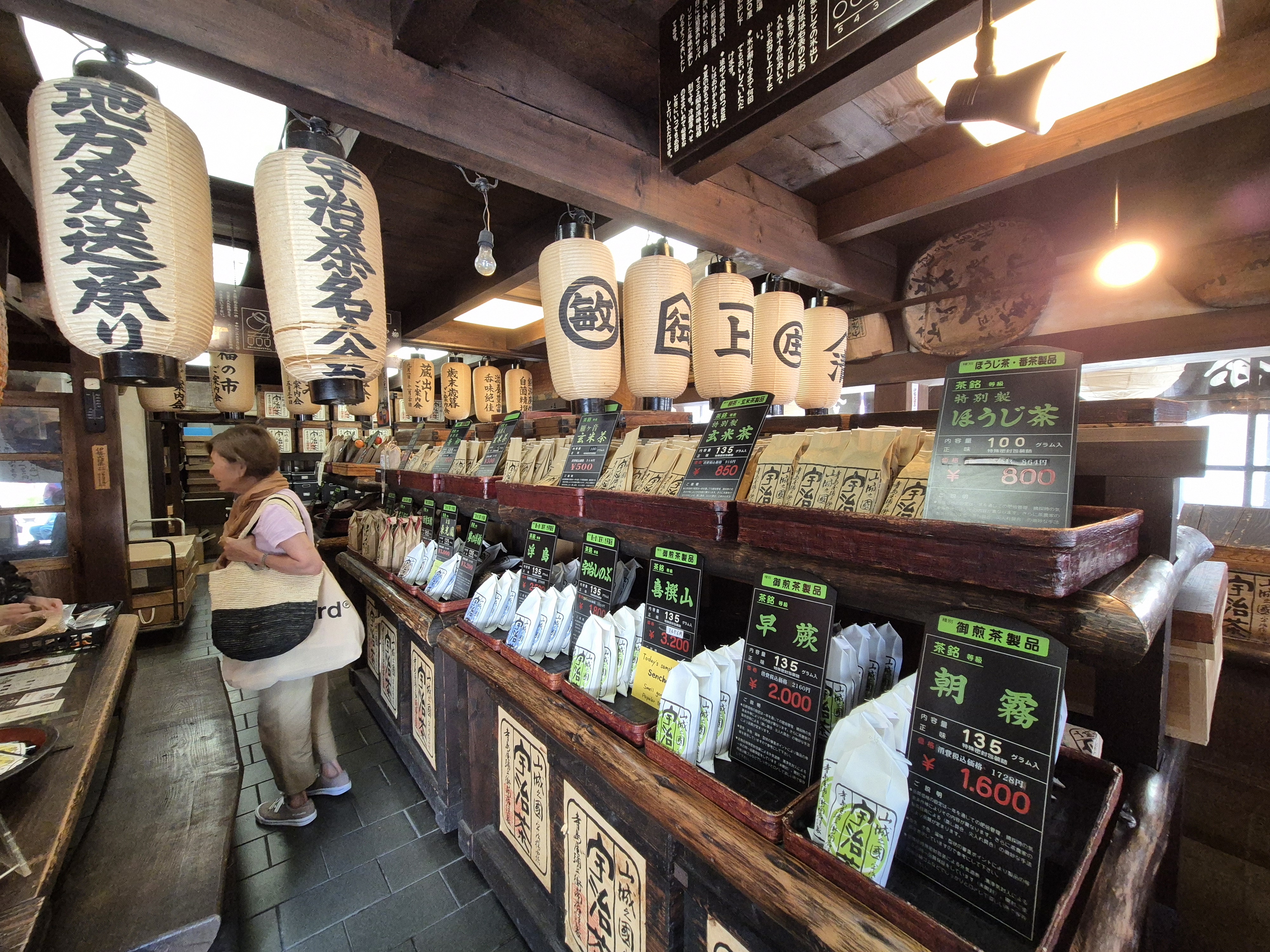
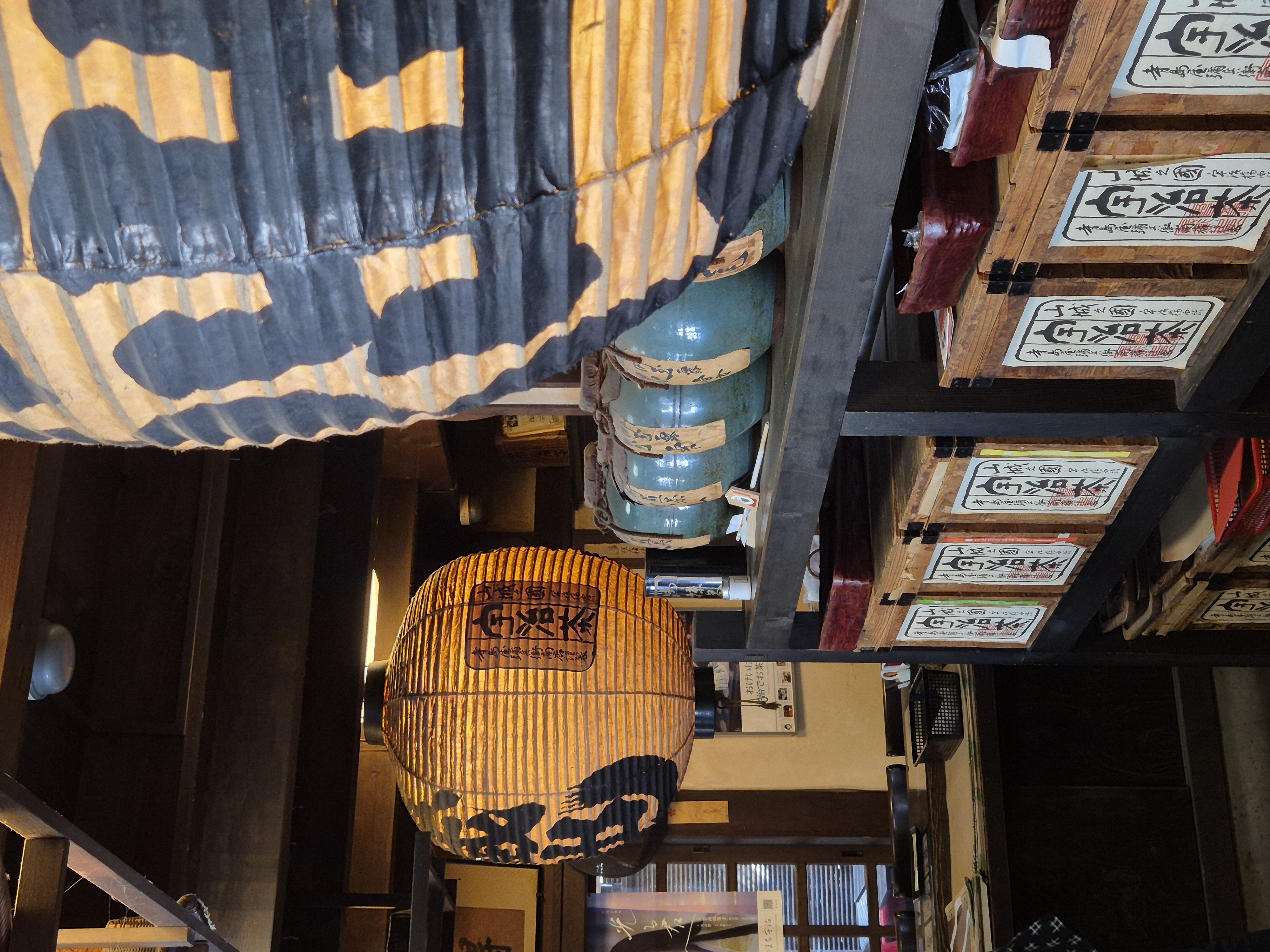
Matcha Afternoon Tea
Before leaving Uji, we had one more stop to make. My wife suggested we should have a “matcha afternoon tea” to fortify ourselves for the journey back to Kobe on very crowded trains. I enjoyed this very much. It was certainly a far cry from an English afternoon tea.
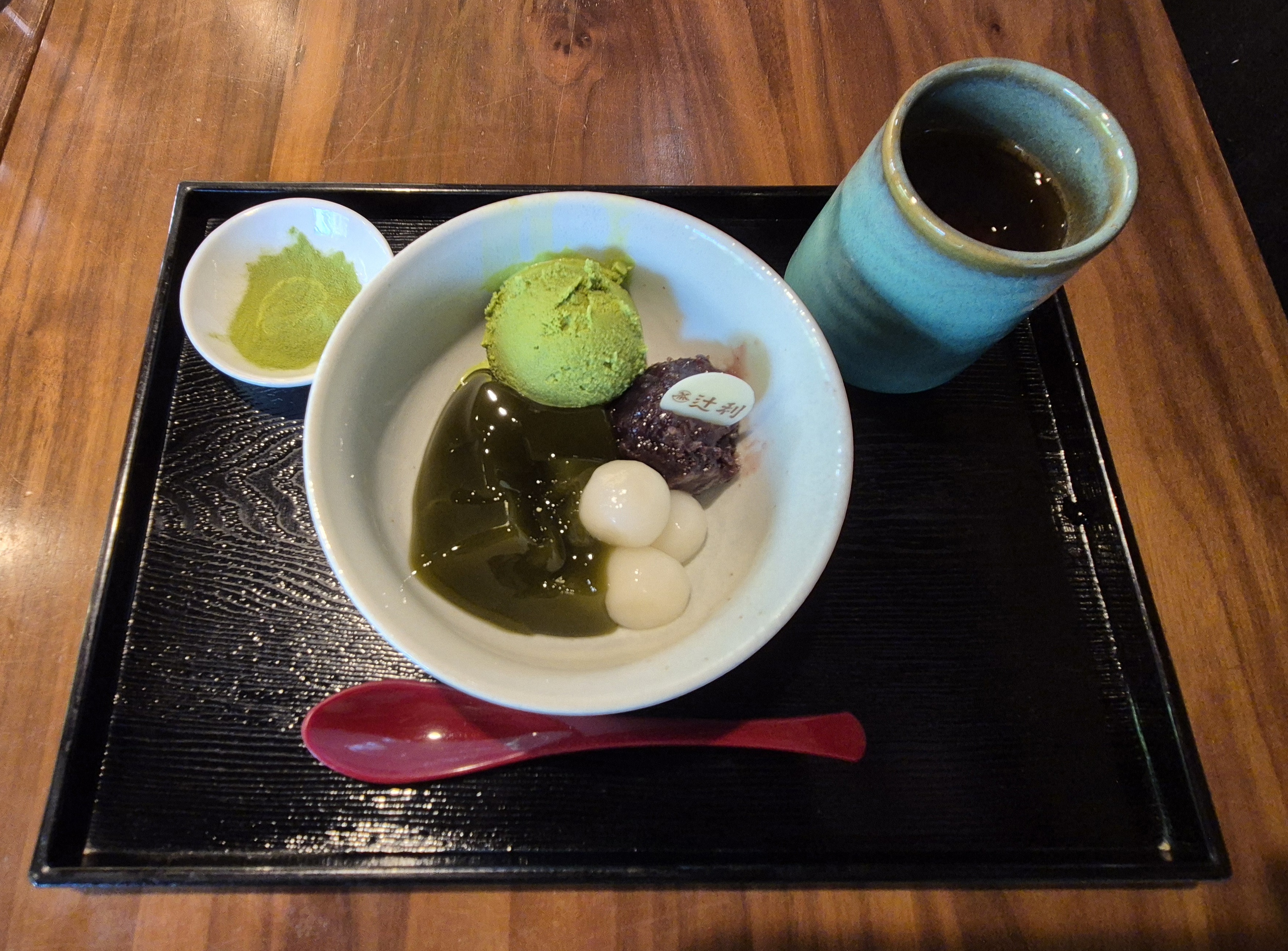
If you appreciate Japanese tea culture and historic Buddhist temples, Uji is a wonderful place to visit. There are several other temples, a botanical garden and The Tale of Genji Museum to see as well. The sights of Uji can all be seen in a day and the town is easily reachable by train from Kyoto, Nara, Osaka and Kobe.
-END-
To continue the Japanese theme, here’s a post about how to create a Japanese garden…



